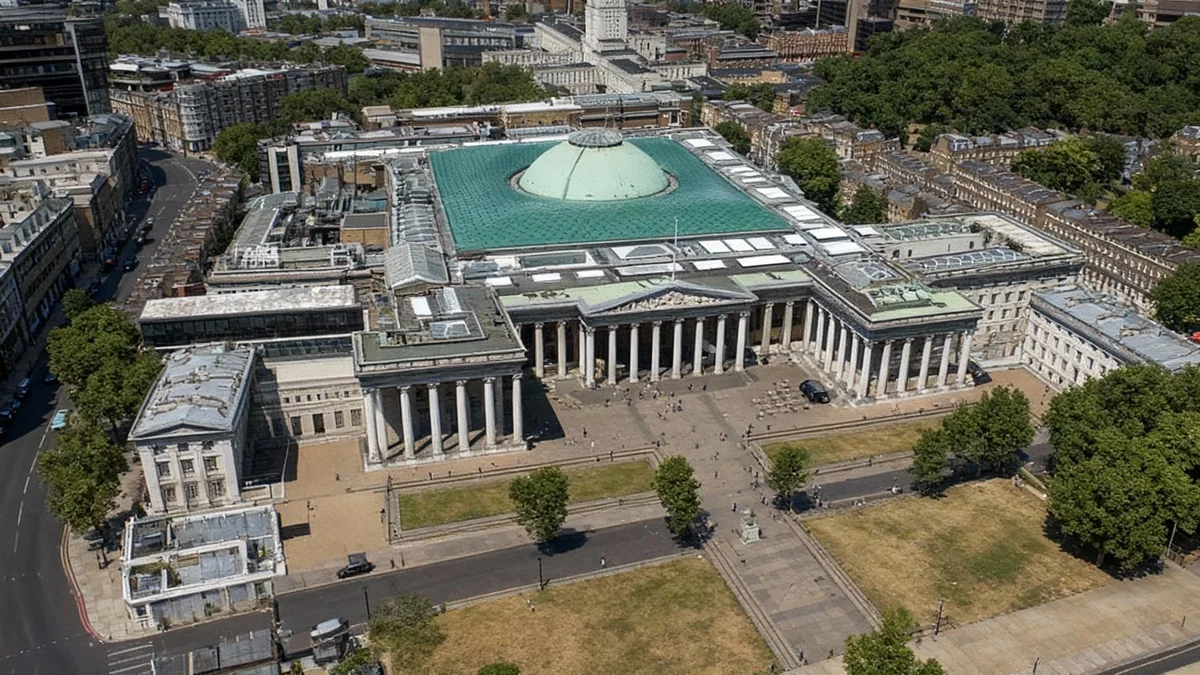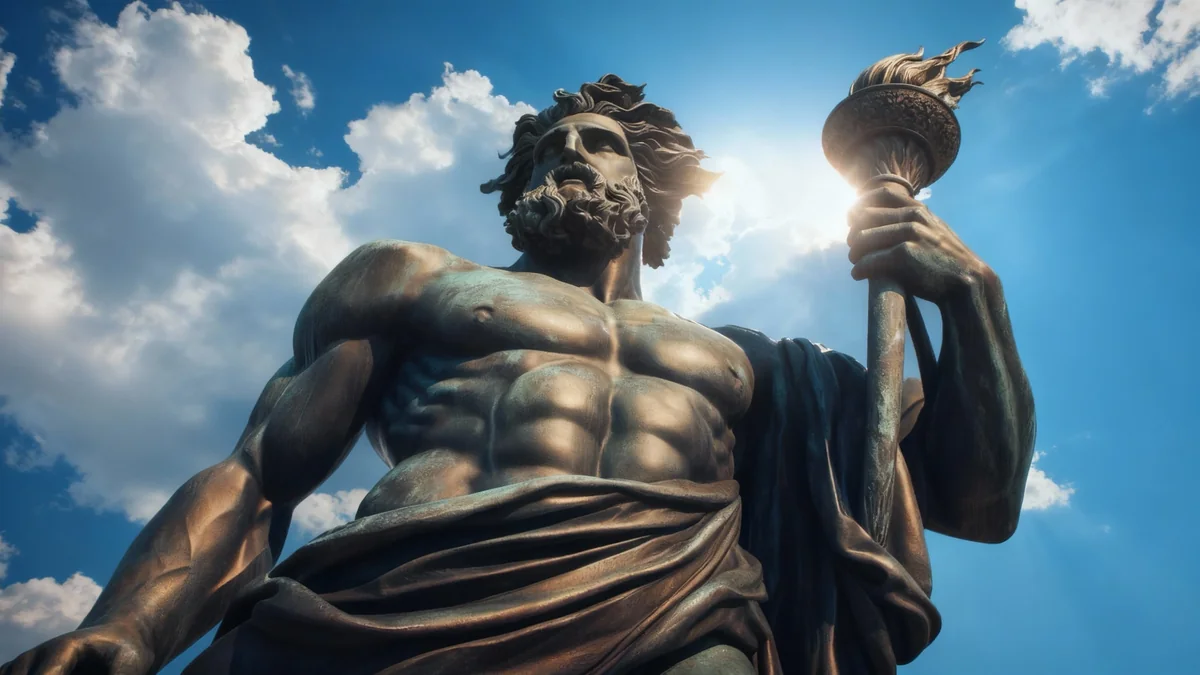A new exhibition titled “Monuments” is opening, bringing together nearly a dozen Confederate statues that were previously removed from public spaces. This highly anticipated show, co-organized by the Museum of Contemporary Art (MOCA) and the Brick, starts Thursday and will run through May 3, 2026. The exhibition places these controversial figures alongside contemporary art, aiming to provoke discussion about American history and the ongoing debate surrounding these symbols.
Key Takeaways
- “Monuments” exhibition features removed Confederate statues.
- Show runs from Thursday through May 3, 2026, at MOCA and the Brick.
- Statues are juxtaposed with contemporary art, sparking dialogue on civil rights and history.
- One statue of Gen. Stonewall Jackson has been physically altered by artist Kara Walker.
The Return of Contentious Symbols
For the past decade, Confederate memorials have been a central point of contention in America's cultural discussions. Over 150 statues and monuments were defaced, painted, or taken down by protesters. Now, some of these monuments are being reinstalled in public areas. A statue of Confederate Gen. Albert Pike is returning to Judiciary Square in Washington, D.C., and the “Reconciliation Monument” will be restored in Arlington Cemetery.
The timing of the “Monuments” exhibition is particularly relevant given these developments. While the show was conceived years ago, the current political climate, including recent actions by the Trump administration regarding historical narratives, has intensified its impact.
“Suddenly everyone thinks that we’re doing this in response to our president, which isn’t at all the case. This is more a case of the political moment coming around to capture us,” said MOCA senior curator Bennett Simpson.
Exhibition Origins and Curatorial Vision
Hamza Walker, director of the Brick, first envisioned “Monuments” after the 2015 shooting at Emanuel African Methodist Episcopal Church in Charleston, S.C. This tragic event, which resulted in nine deaths, ignited a national movement against honoring figures who fought to maintain slavery. The question of what to do with the country’s many Confederate statues became a widespread debate.
Fact Check
- More than 150 Confederate statues were removed or defaced in the last decade.
- The exhibition was originally planned to open two years ago.
The curators of “Monuments” spent countless hours creating detailed proposals for the use of these statues. Most of the pieces are on loan and must be returned. They provided assurances that the monuments would be handled with care, insured, and protected. Getting these controversial pieces proved to be a complex and time-consuming process.
Artistic Responses to History
The exhibition at MOCA features several powerful juxtapositions. The statue “Confederate Women of Maryland,” originally from Baltimore, depicts two women, one cradling a fallen male soldier. This piece is displayed directly across from a series of photographs by John Henry, which show Black mothers holding their sons in urban settings. This pairing creates a poignant dialogue about loss and maternal grief across different historical and social contexts.
Other statues, like that of Confederate President Jefferson Davis, appear as they did when removed, splattered with paint by protesters. The base of a Gen. Robert E. Lee statue, covered in graffiti with phrases such as “Protect Black Women,” is also on display. These pieces are presented in a room alongside chilling photographs by Andres Serrano, featuring hooded Ku Klux Klan leaders from Georgia, highlighting the enduring legacy of racial violence.
Historical Context
The Dred Scott case of 1857, referenced in the exhibition, was a landmark Supreme Court decision that ruled African Americans, whether enslaved or free, could not be American citizens and had no standing to sue in federal court. This decision intensified the national debate over slavery and contributed to the outbreak of the Civil War.
Controversial Figures and Their Legacies
A statue of former Supreme Court Chief Justice Roger B. Taney is also part of the exhibition. Taney authored the majority opinion in the infamous 1857 Dred Scott case, which declared that enslaved people could never be citizens. This monument sits beside a statue of Josephus Daniels, a prominent newspaper owner who played a role in the 1898 Wilmington massacre.
The Wilmington massacre saw a mob of over 2,000 white supremacists kill as many as 300 people and overthrow the city’s biracial government. Across from these statues, a wall displays studio portraits of Black North Carolinians taken in 1910 by photographer Hugh Mangum. These individuals would have been alive during the Wilmington massacre, adding a layer of personal history to the stark historical realities presented.
Kara Walker’s Radical Transformation
One monument, housed separately at the Brick, stands out due to its physical alteration. Artist Kara Walker’s “Unmanned Drone” is the only statue in the exhibition that has been fundamentally transformed. Walker used a plasma cutter to dissect a statue of prominent Confederate Gen. Stonewall Jackson, then reassembled it into an entirely new form.
- Jackson’s face is gone.
- His hair is speared by a part of his horse’s upper thigh.
- The horse appears upright, with its head emerging from the back of its saddle.
- Jackson’s amputated arm is now separate from his body, affixed to the base.
- His legs are sliced open, and his saber rests on the ground.
The effect of this transformation is both breathtaking and violent. According to Hamza Walker, Kara Walker’s reimagined statue is an ideological and aesthetic affront, a powerful “tone cluster” that concentrates artistic energy and force onto the object. The statue was specifically deeded to the Brick for this purpose, highlighting its controversial and “radioactive” history.
“Ideologically it’s an affront, aesthetically it’s an affront ... on a piano, it’s not just a chord, this is a tone cluster,” Hamza Walker said, describing the reimagined statue.
The Story Behind the Transformation
The history surrounding the Stonewall Jackson statue is further detailed at the Brick through photos, newspaper articles, and letters. After the Charleston church massacre, a young Black woman named Zyahna Bryant petitioned Charlottesville to remove its statues of Jackson and Lee. These efforts led to Charlottesville becoming a focal point for national debates on racism, culminating in the infamous Unite the Right rally in 2017.
During what became known as “the Summer of Hate,” white nationalists and neo-Nazis gathered in the streets, leading to violence and a tragic death. President Trump’s subsequent remarks about “very fine people on both sides” further fueled the controversy. These events solidified the toxic nature of these statues, leading Charlottesville to mandate their permanent removal rather than simple storage.
Key Events
- 2015: Charleston church massacre sparks movement against Confederate symbols.
- 2017: Charlottesville rally erupts over statue removal, leading to violence.
- 2023: Charlottesville gives Lee statue to Jefferson School African American Heritage Center for melting.
In 2023, Charlottesville gave its Lee statue to the Jefferson School African American Heritage Center. This center plans to melt the 10,000-pound statue and use the bronze to create new art. Kara Walker’s sculpture of Jackson shifts focus from the general to his horse, Little Sorrel, a revered warhorse that outlived Jackson and was even taxidermied after its death. This recontextualization asks fundamental questions about how society engages with its historical monuments.





